Major Retrospective of Warhol Prints Opens in Portland
- PORTLAND, Oregon
- /
- October 09, 2016
I’m for mechanical art. When I took up silkscreening, it was to more fully exploit the preconceived image through commercial techniques of multiple reproduction. —Andy Warhol
The Portland Art Museum is hosting Andy Warhol: Prints from the Collections of Jordan D. Schnitzer and His Family Foundation, opening October 8, 2016. This major retrospective exhibition of approximately 250 Andy Warhol prints and ephemera from the collection of Jordan D. Schnitzer is the largest of its kind ever to be presented. It spans two floors of the Museum and includes instantly recognizable images such as Warhol’s iconic Campbell’s Soup Can (Tomato) and Marilyn Monroe (Marilyn).
Printmaking was a vital artistic practice for Andy Warhol. Prints figure prominently throughout his career from his earliest work as a commercial illustrator in the 1950s, to the collaborative silkscreens made in the Factory during the ‘60s and the commissioned portfolios of his final years. Portland collector Jordan D. Schnitzer’s comprehensive collection establishes the range of Warhol’s innovative graphic production as it evolved over the course of four decades. The artist’s well-known fascination with popular culture also instills the exhibition with a chronicle of American life in the second half of the twentieth century. The two threads come together to reveal how Warhol’s print publishing enterprise underscores the evolution of today’s hyper sophisticated, saturated, and savvy visual culture.
The exhibition is organized chronologically and by series. The structure demonstrates in depth Warhol’s use of different printmaking techniques, beginning with illustrated books and ending with screen printing. The exhibition also highlights links between Warhol’s obsession with serial image repetition and the essence of printmaking as a mechanical means for reproducing images. With this convergence, Warhol famously complicated distinctions between the original and the reproduction. The results muddied the conventional approach of highly valuing unique works that display the artist’s touch, instead celebrating print multiples as a medium for experimentation.
“Andy Warhol harnessed the allure of media images of celebrity, consumer goods, sex, death, and disaster to create his iconic pop art,” said exhibition curator Sara Krajewski, the Robert and Mercedes Eichholz Curator of Modern and Contemporary Art. “This retrospective provides an in-depth look at how the artist manipulated the seductive power of the photographic and the televisual in his printmaking. Thirty-five years of prints offer a compelling view of Warhol’s critical use of new imaging formats and technologies, from newsprint distribution to instant cameras, television and video. Our comprehensive survey of Warhol’s vast print production demonstrates Warhol’s impact on the evolution of contemporary visual culture.”
Warhol’s prints present a journey through the reproduced image in American popular culture: from icons Jacqueline Kennedy Onassis and Marilyn Monroe to the socially charged Birmingham civil rights protests and political posters of the 1970s. In its entirety, the exhibition offers a bellwether of contemporary life and society’s ongoing obsession with celebrities, fashion, political figures, athletes, sensationalism, and scandal.
“The Portland Art Museum’s ambitious overview of Andy Warhol’s prints offers an opportunity to see the artist anew,” observes Richard H. Axsom, contributing essayist to the exhibition catalogue. “Playing upon and manipulating the imagery of popular culture, Warhol fashioned in his major print series a body of work of immeasurable power. Under-appreciated is its profound humanity, often obscured by the glamor and glitz of Warhol’s public persona. For an artist known for his superficiality, Warhol was among the least superficial artists of his time.”
Andy Warhol: Prints from the Collections of Jordan D. Schnitzer and His Family Foundation is accompanied by an exhibition catalog published in partnership with the Foundation.


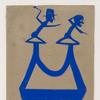



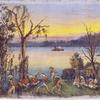

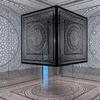

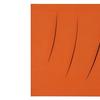
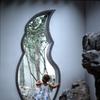

100x100_c.jpg)


